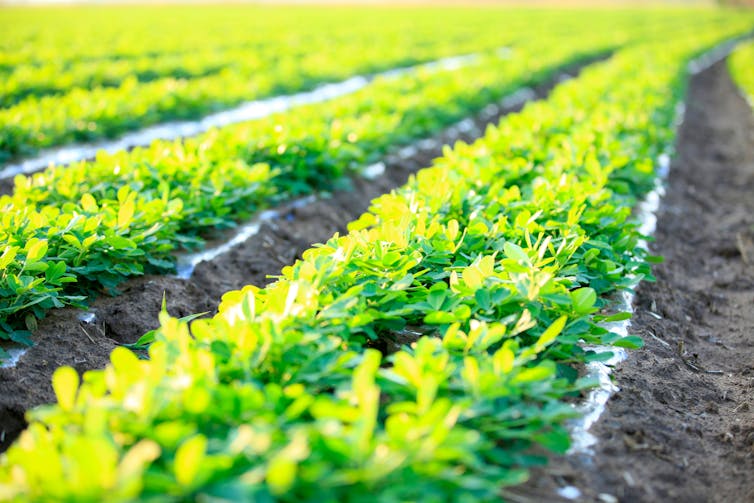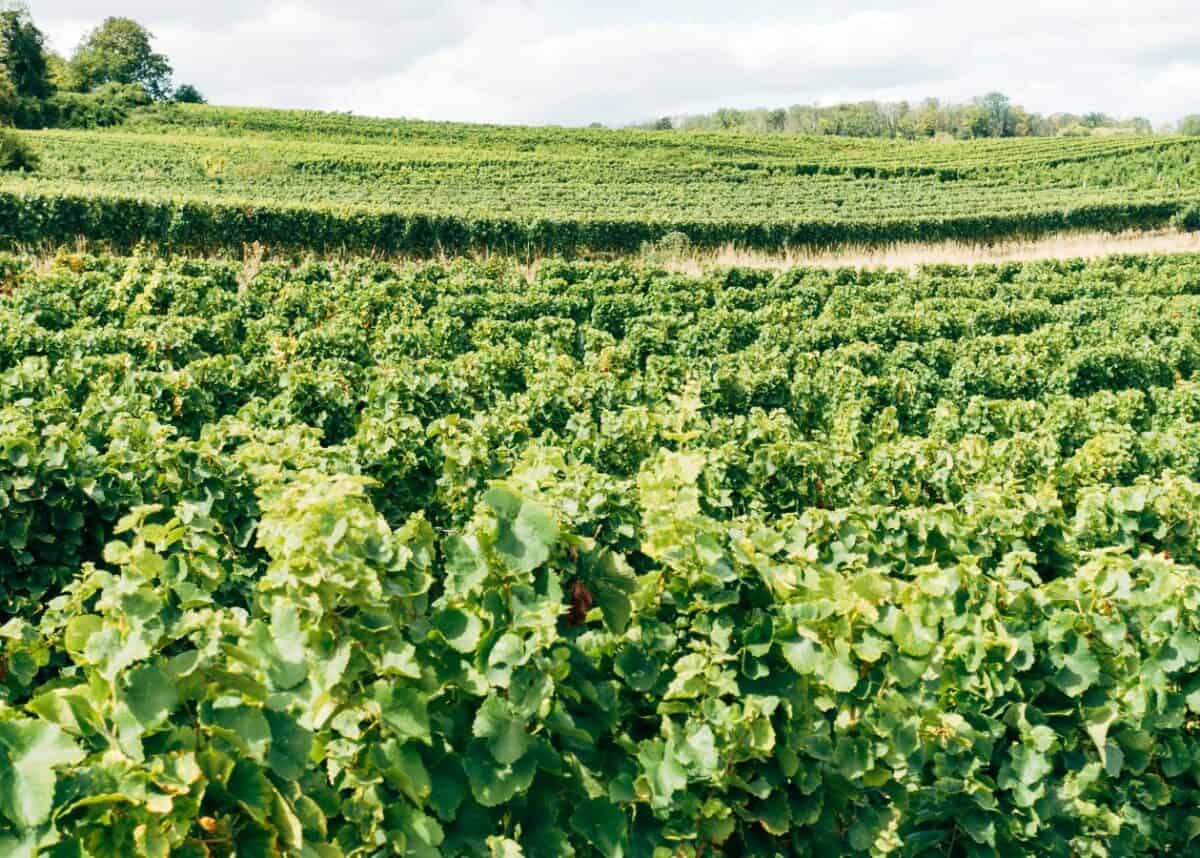Michael Williams, Trinity College Dublin; David Styles, Bangor University, and Marcela Porto Costa, Bangor University
Peas, lentils, chickpeas, beans and peanuts: if it comes in a pod then chances are it’s a legume. These unassuming food crops have a special ability that makes them fairly unique in the plant kingdom.
They can convert nitrogen gas – which is abundant in the air – to something altogether more rare and important to plants: ammonia. Ammonia can be immediately converted to proteins within a plant, helping it grow. That’s why legume crops don’t need nitrogen fertiliser, and they even leave some of the nitrogen they produce in the soil for other plants to use.
Most modern farms add nitrogen to fields in synthetic fertilisers. Since the 1960s, annual nitrogen fertiliser production worldwide has increased by a staggering 458%, boosting cereal production in Europe to more than 188 million tonnes a year. At best, half of the nitrogen fertiliser applied to farmland will be taken up and used by the crop. Much of the remainder is lost to the atmosphere, often in the form of nitrous oxide – a greenhouse gas 300 times more potent than CO₂. Some of it leaches into freshwater stored deep underground, predominantly as nitrate.
The most comprehensive study to date found that in the early 2000s, nitrate pollution in drinking water had shortened the lifespan of the average European by six months by promoting conditions such as methemoglobinemia, thyroid disorders, and gastric cancer.
Globally, nitrous oxide emissions from fertilisers and methane from livestock contribute most of agriculture’s greenhouse gases – a sector responsible for about a quarter of all human activity’s planet-warming gases. The EU has set itself a 2030 target for reducing agricultural greenhouse gas emissions and chemical pesticide use by 50%, and synthetic fertiliser use by 20%.
Sometimes, the simplest solution is the best one. By reintroducing an age-old system of growing legumes in rotation with other crops, farms could slash the amount of fertiliser they use while producing nutritious and wildlife-friendly food.
The wonder crop
In a recent study, we found that using legumes in conventional cereal crop rotations can deliver the same amount of nutrition but at a markedly lower environmental cost. That’s because some of the nitrogen that cereal crops need is provided by the previous year’s cropping of legumes on the same field.
As grain legumes such as beans, peas and lentils have more protein and fibre by weight than cereal crops such as wheat, barley and oats, we calculated that an average cereal farm in Scotland could grow a legume crop for one year in a five-year cycle and reduce the amount of nitrogen fertiliser needed over the entire rotation cycle by nearly 50%, while producing the same nutritional output.
By using substantially less fertiliser, greenhouse gas emissions would be expected to fall by as much as 43% over the same period. Grain legumes can also be used as animal feed along with cereals – providing more digestible protein at lower environmental cost.
Scientists only discovered the process by which legumes take nitrogen from the air in the late 19th century, nearly a hundred years after they discovered elemental nitrogen. Special tissues on the roots of legume plants provide a safe haven for thousands of nitrogen-fixing bacteria. In return for a steady supply of sugars, which the legume generates in its leaves using photosynthesis, these bacteria provide ample nitrogen in a form that’s most useful for plant growth.
After the crop is harvested, the legume residues decompose and deliver the useful nitrogen to the soil so that other plants can use it. These crops even work as green manure, by ploughing the still growing plants into the soil to give it more nitrogen.

But legumes crops offer many more benefits beyond reducing how much farms rely on fertiliser. Diversifying crop rotations with legumes can reduce the incidence of cereal pests and disease by cutting off their life cycle between years and reducing the need for pesticides.
By virtue of their deep roots, many legumes are also more resistant to drought than conventional crops. Legume flowers provide an excellent source of nectar and pollen for pollinating insects too, and consuming more legumes in the human diet offers a wide variety of health benefits.
Despite all these positives, legumes are not widely cultivated in Europe, covering only 1.5% of European arable land, compared to 14.5% worldwide. In fact, Europe imports a lot of its protein-rich crops from South America, where booming demand for soya beans is driving deforestation. It’s high time farmers in Europe restored these wonder crops to their fields – for less pollution and more nutritious food.
Michael Williams, Assistant Professor of Botany, Trinity College Dublin; David Styles, Lecturer in Carbon Footprinting, Bangor University, and Marcela Porto Costa, PhD Candidate in Sustainable Agriculture, Bangor University
This article is republished from The Conversation under a Creative Commons license. Read the original article.












